
Roots
The quest for preserving the vitality of textured hair at night is a timeless pursuit, deeply woven into the daily rhythms of countless individuals across generations and continents. It is a quiet observation, perhaps, as the day wanes and thoughts turn to restorative rest, that our hair, too, seeks refuge from the rigors of waking hours. This understanding, that protection during sleep is not merely a modern convenience but a profound act of care, finds its genesis in ancestral wisdom and the enduring science of hair itself.
Consider the inherent qualities of textured hair – its delicate coil, its tendency towards dryness, its very structure that yearns for thoughtful attention. Unlike straighter strands, textured hair often experiences greater friction against abrasive surfaces, leading to concerns like breakage and moisture loss. This fundamental characteristic underpins the centuries-old practices of covering hair at night, a testament to human ingenuity and a deep connection to self-preservation.
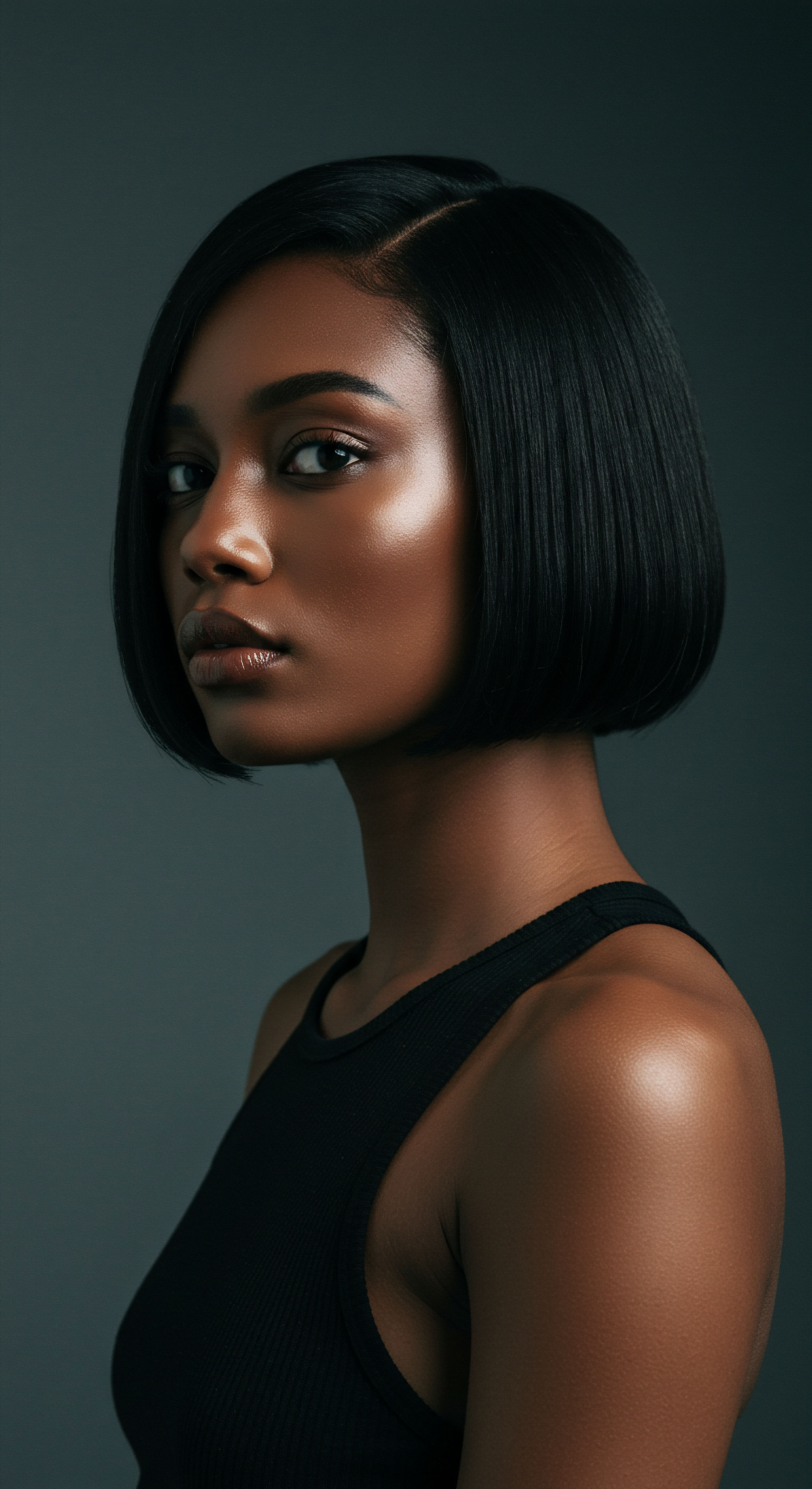
Hair Anatomy and Physiology Specific to Textured Hair
To truly appreciate the purpose of traditional head coverings, one must first comprehend the unique architecture of textured hair. Each strand, a marvel of biological engineering, possesses a cuticle layer, an outer shield composed of overlapping scales. In straight hair, these scales lie flat, offering a smooth surface.
However, with textured hair, particularly coily and kinky types, the cuticle scales naturally tend to be more lifted or open. This characteristic, while contributing to the hair’s glorious volume and definition, also makes it more susceptible to external aggressors.
The helical or zig-zagging shape of textured hair means that individual strands often rub against each other, creating internal friction. When this inherent friction is compounded by external forces, such as contact with common bedding materials, the cuticle can lift further, leading to increased porosity, moisture escape, and ultimately, damage. This is where the wisdom of protective coverings steps in, acting as a gentle buffer.
The very structure of textured hair, with its naturally lifted cuticle scales, makes it inherently more vulnerable to friction and moisture loss.
Beyond the cuticle, the internal structure of textured hair, including its cortical cells and medulla, also plays a role in its unique needs. The distribution of natural oils from the scalp along the hair shaft can be more challenging for coily patterns, contributing to a predisposition for dryness. This dryness, in turn, exacerbates susceptibility to breakage, creating a cycle that night protection aims to interrupt.

Textured Hair Classification Systems
Understanding the diversity within textured hair is also key. While no single system perfectly captures the spectrum, common classifications like Andre Walker’s typing system (e.g. 3A, 3B, 3C, 4A, 4B, 4C) offer a helpful framework.
- Type 3 hair generally presents with a distinct S-shape curl pattern.
- Type 4 hair often displays a Z-shape or tightly coiled pattern, with greater shrinkage.
Regardless of the specific type, the overarching need for gentle handling and environmental shielding remains a constant. The protective strategies, though, might vary slightly in application depending on the curl’s tightness and density.

The Essential Lexicon of Textured Hair
To discuss textured hair with accuracy and respect, a shared language becomes important.
- Coil ❉ A tight, spring-like curl pattern.
- Kink ❉ A very tight curl pattern, often with sharp angles.
- Frizz ❉ The appearance of unruly hair, often caused by lifted cuticles and moisture absorption.
- Breakage ❉ The snapping or fracturing of hair strands, typically due to mechanical stress or dryness.
- Moisture Retention ❉ The ability of hair to hold onto hydration, crucial for preventing dryness and brittleness.
These terms help us articulate the specific challenges and triumphs associated with caring for textured hair, particularly when considering nighttime protection.
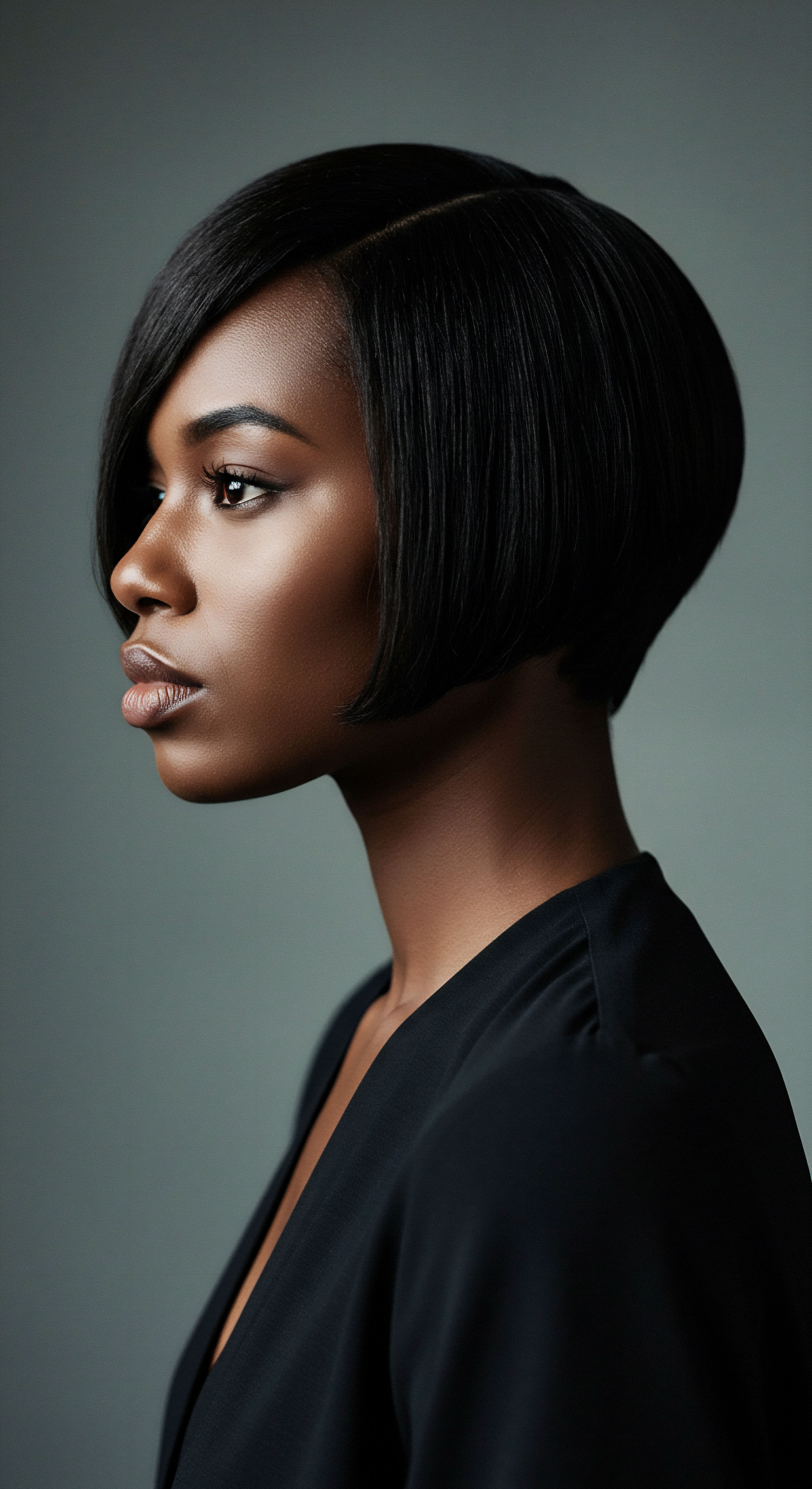
Hair Growth Cycles and Influencing Factors
Hair growth follows a cyclical pattern ❉ anagen (growth), catagen (transition), and telogen (resting/shedding). During the anagen phase, which can last for several years, hair actively grows. Mechanical damage, such as that caused by friction during sleep, can prematurely shorten this phase, leading to increased shedding and perceived slower growth. The consistent use of protective head coverings aims to extend the anagen phase by minimizing external stressors.
Beyond mechanical factors, physiological influences also play a role. Sleep deprivation, for instance, has been linked to increased cortisol levels, a stress hormone that can push hair follicles into the resting phase too soon, potentially leading to increased shedding. Adequate, undisturbed sleep, supported by protective hair practices, contributes to overall hair health by promoting hormonal balance and reducing stress.

Ritual
As daylight recedes and the world quiets, a profound shift occurs in our approach to self-care. For textured hair, this transition marks the beginning of a sacred nightly ritual, a time when deliberate actions are taken to safeguard the day’s styling and prepare strands for another morning of vibrancy. This is where the wisdom of traditional head coverings truly comes alive, transforming a simple act into a purposeful gesture of preservation. It is a moment of gentle anticipation, knowing that the choices made before sleep directly influence the hair’s resilience and beauty upon waking.
The selection of a protective covering is not merely about aesthetic appeal; it is a practical application of understanding how materials interact with delicate hair structures. The goal is to minimize friction, maintain hydration, and preserve the integrity of styles, ensuring that the hair remains supple and defined.

Protective Styling Encyclopedia
Before applying a head covering, many individuals with textured hair opt for specific protective styles. These styles further reduce tangling and mechanical stress, working in concert with the chosen covering.
- Pineapple Method ❉ Gathering hair loosely at the very top of the head, often secured with a soft scrunchie. This method keeps the bulk of the hair elevated, preventing flattening and friction against the pillow.
- Loose Braids or Twists ❉ Sectioning hair into one or several loose braids or two-strand twists. This confines the hair, minimizing movement and subsequent friction, while helping to maintain curl definition.
- Bantu Knots ❉ Small, coiled buns secured against the scalp. These not only protect the hair but can also help to set a curl pattern for the following day.
These methods, often passed down through generations, demonstrate an intuitive understanding of hair mechanics, laying the groundwork for the head covering to perform its best.

The Nighttime Sanctuary Essential Sleep Protection
The core of nighttime hair protection lies in creating a barrier between delicate hair and potentially abrasive surfaces. Cotton pillowcases, while comfortable for skin, can absorb moisture from hair and create significant friction, leading to frizz, breakage, and tangles. This is where materials like silk and satin truly shine.
Silk, a natural protein fiber, and satin, a weave known for its smooth surface, both possess low coefficients of friction. This characteristic allows hair to glide over the material with minimal resistance, significantly reducing mechanical damage.
Choosing silk or satin for nighttime hair coverings creates a crucial barrier against friction, preserving moisture and minimizing breakage.
A study by Schwartz & Knowles (1963) and Bhushan et al. (2014) highlights the importance of surface smoothness in reducing cuticle disturbance and frictional damage to hair. This scientific backing reinforces the traditional wisdom behind selecting these smooth fabrics.

Bonnets and Scarves The Wisdom of Covering
Bonnets ❉ A bonnet, typically made of satin or silk, is a dome-shaped cap that covers the entire head of hair. Its primary function is to contain the hair, keeping it undisturbed and protected from friction with bedding. This helps to:
- Lock in Moisture ❉ Satin and silk are less absorbent than cotton, allowing hair’s natural oils and applied products to remain on the strands.
- Minimize Frizz ❉ By keeping the hair cuticle smooth and flat, bonnets prevent moisture from entering and swelling the hair shaft, a common cause of frizz.
- Reduce Breakage ❉ The smooth surface allows hair to move freely, avoiding tugging and pulling that leads to breakage.
- Preserve Hairstyles ❉ Bonnets help to maintain curl definition and the longevity of various styles, reducing the need for daily restyling.
Scarves ❉ Silk or satin scarves offer a versatile alternative to bonnets. They can be tied in various ways to secure hair, providing similar benefits of friction reduction and moisture retention. Their adaptability allows for different levels of compression and coverage, suiting diverse hair lengths and styling preferences. The use of head wraps, including scarves, has a long history across the African diaspora, serving not only protective functions but also cultural and symbolic ones.
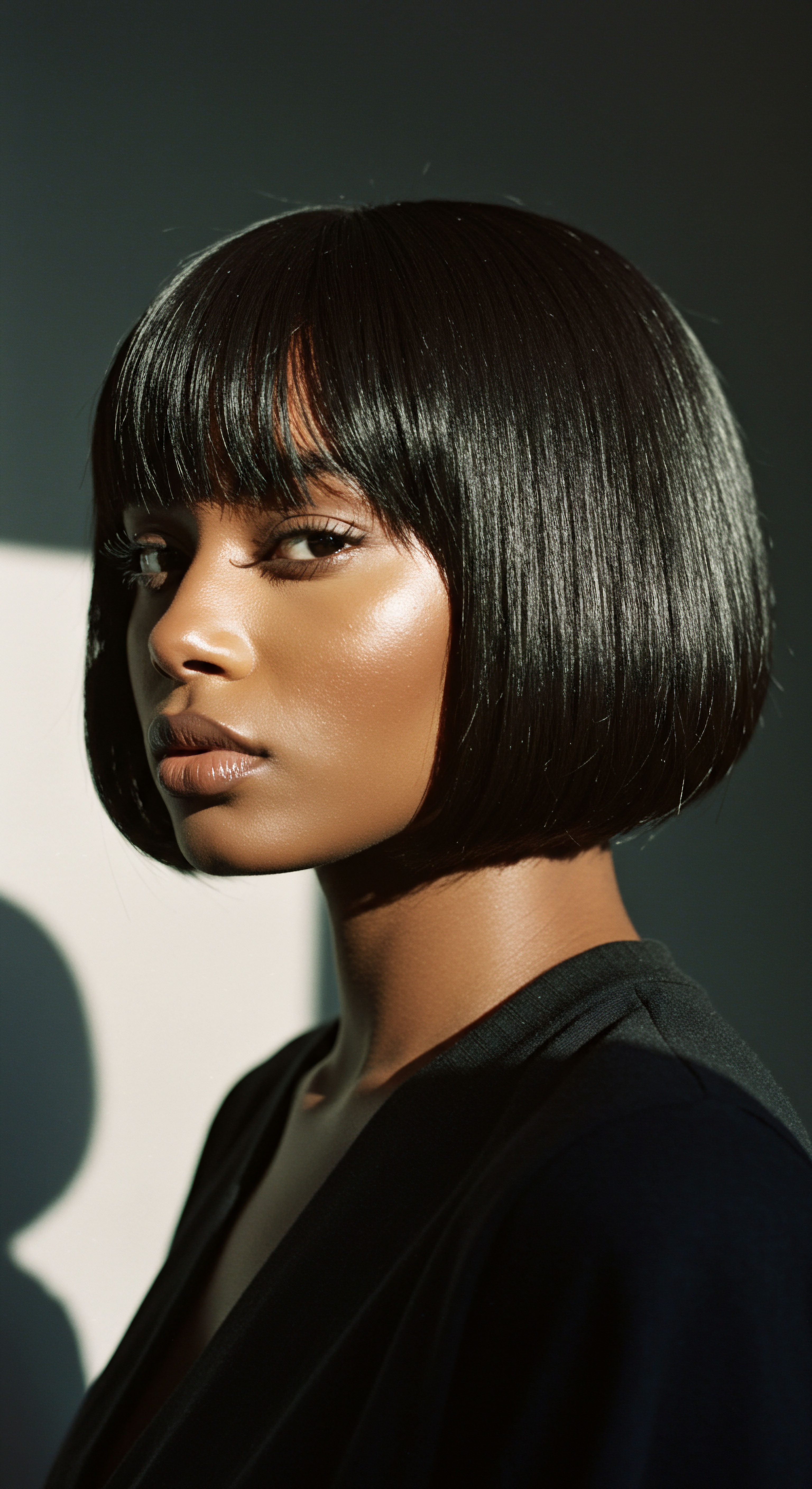
Pillowcases The Unseen Protector
While bonnets and scarves directly envelop the hair, a silk or satin pillowcase serves as an important secondary line of defense. Even if a head covering shifts during sleep, the smooth pillowcase ensures that any exposed hair still benefits from reduced friction. This dual approach offers comprehensive protection, addressing the reality of active sleepers.
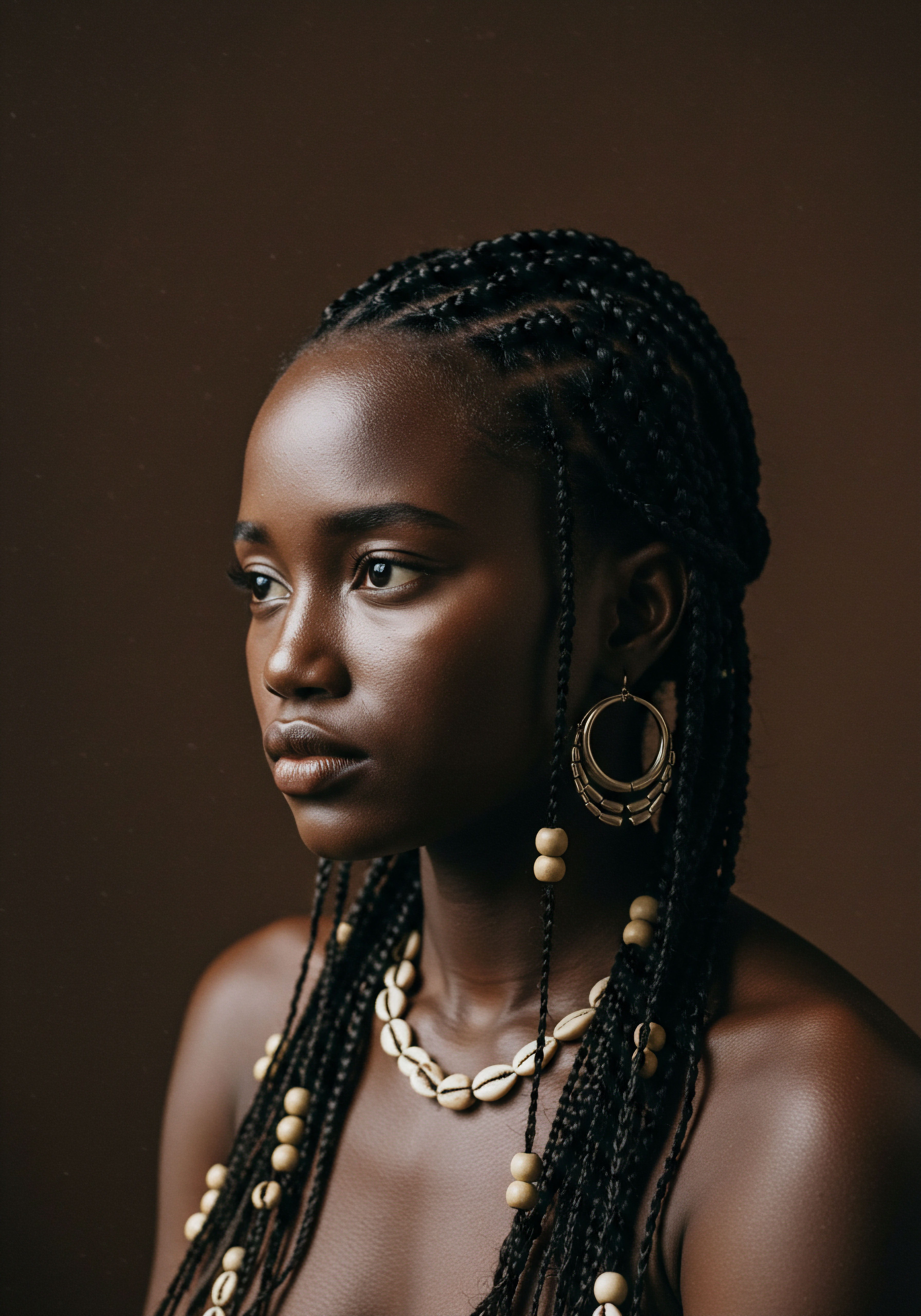
Ingredient Deep Dives for Textured Hair Needs
The efficacy of nighttime protection is amplified when paired with appropriate hair products. Before donning a head covering, applying certain ingredients can further enhance moisture retention and hair health.
- Natural Oils ❉ Shea butter, coconut oil, and jojoba oil are frequently used to seal in moisture, particularly on the ends of hair.
- Leave-In Conditioners ❉ These products provide a layer of hydration that helps to keep hair soft and pliable overnight.
- Hair Masks ❉ Applied as an overnight treatment, masks can deliver deep conditioning, replenishing moisture and strengthening strands.
These ingredients work synergistically with the protective barrier of head coverings, ensuring hair receives nourishment while being shielded from mechanical stress.

Relay
Beyond the tangible benefits of reduced friction and preserved moisture, what deeper echoes do traditional head coverings carry into our modern understanding of hair care? The story of these coverings extends far beyond mere practicality, inviting us to consider their profound cultural roots and the scientific intricacies that affirm their enduring value. This section aims to peel back the layers, revealing the interconnectedness of heritage, material science, and the quiet resilience of textured hair.
The act of covering one’s head at night, often seen as a simple routine, holds a complex lineage, particularly within communities with textured hair. It is a practice that speaks volumes about adaptation, identity, and an innate wisdom passed down through generations.
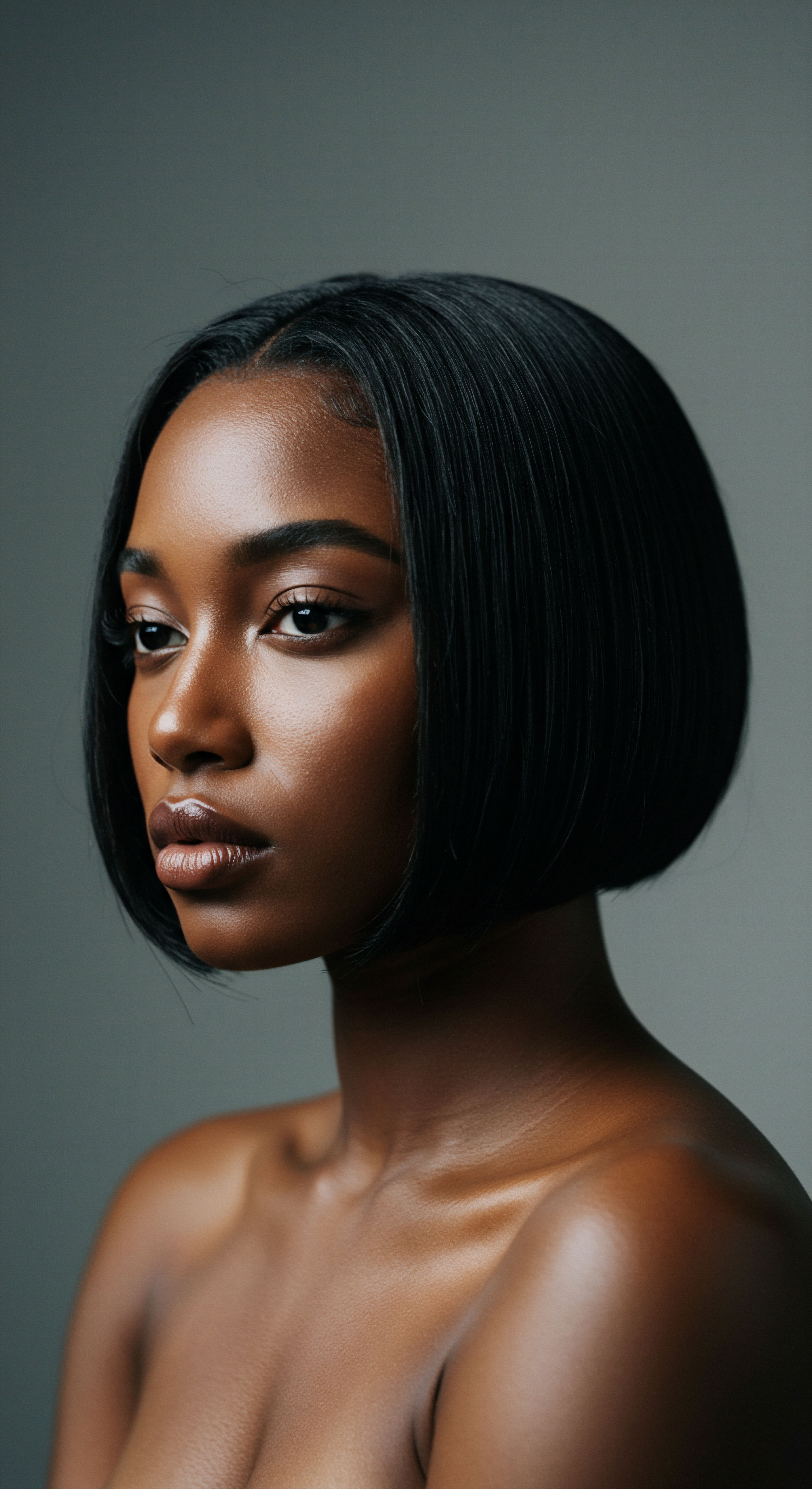
Historical Reverberations of Hair Coverings
The tradition of head coverings is not new; its origins span millennia and continents. In ancient Egypt, for example, while wigs were prevalent among the elite for status and protection from the sun, headbands and other forms of hair adornment were also used. These early forms of hair management underscore a historical awareness of hair’s vulnerability and its connection to societal presentation.
Within African cultures, head wraps have long held multifaceted significance, denoting status, age, marital standing, and even spiritual beliefs. Their protective function against environmental elements, such as sun and dust, was a constant, but their role in preserving intricate hairstyles, often worn for days or weeks, also became paramount. This protective aspect naturally extended to nighttime, ensuring the longevity of labor-intensive styles.
During the transatlantic slave trade, the meaning of head wraps underwent a profound transformation. What was once a symbol of pride and identity in Africa became, in some contexts, a tool of subjugation. For instance, the Tignon Laws in 18th-century Louisiana mandated that free Black women wear head wraps to signify their social status.
Yet, these women, with remarkable spirit, transformed the tignon into a fashion statement, using luxurious fabrics and elaborate styles to reclaim their dignity and assert their identity. This historical arc highlights the resilience and adaptability of hair covering practices.
Traditional head coverings carry a deep cultural resonance, having served as symbols of status, identity, and resistance across various historical contexts.
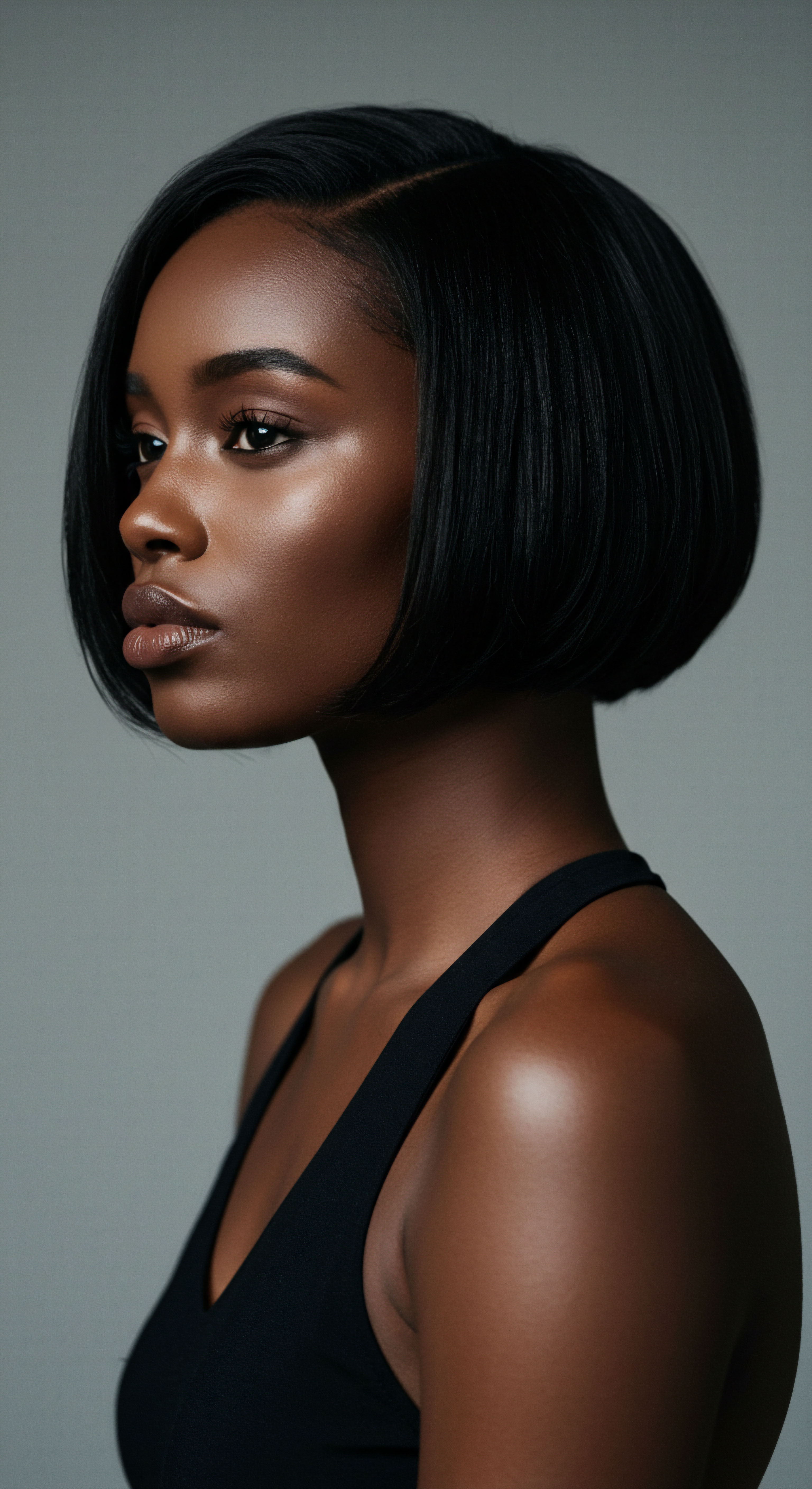
What is the Impact of Friction on Hair Health at Night?
The impact of friction on hair, particularly textured hair, is a critical scientific consideration. When hair rubs against rough surfaces, like cotton pillowcases, the outermost cuticle layer can lift, causing damage. This damage manifests as frizz, tangles, and, in more severe cases, hair breakage. A clinical example of this phenomenon is friction alopecia , a non-scarring hair loss condition caused by repetitive rubbing of hair against an external object.
A case report published in Skin Appendage Disorders details a 15-year-old girl who developed friction alopecia on her parietal scalp due to repetitively touching and scratching her hair while studying for tests. This demonstrates how even seemingly minor, repetitive mechanical stress can compromise hair integrity, leading to noticeable hair loss. The principle applies equally to the friction experienced by hair against bedding surfaces during sleep.
The smooth surfaces of silk and satin dramatically reduce this coefficient of friction. Silk, being a natural protein fiber, has a smooth surface that allows hair to glide effortlessly. Satin, a synthetic or natural fabric known for its smooth weave, offers similar benefits. This reduction in friction is vital for maintaining the hair’s cuticle layer, preventing moisture loss, and ultimately preserving hair length and overall health.
| Material Cotton |
| Coefficient of Friction (Relative) High |
| Moisture Absorption High |
| Impact on Hair Increased friction, tangles, frizz, moisture loss, breakage. |
| Material Silk |
| Coefficient of Friction (Relative) Low |
| Moisture Absorption Low |
| Impact on Hair Reduced friction, retains moisture, minimizes frizz, less breakage. |
| Material Satin |
| Coefficient of Friction (Relative) Low |
| Moisture Absorption Low |
| Impact on Hair Reduced friction, retains moisture, minimizes frizz, less breakage. |
| Material Selecting materials with low friction and low absorbency significantly aids in protecting textured hair during sleep. |
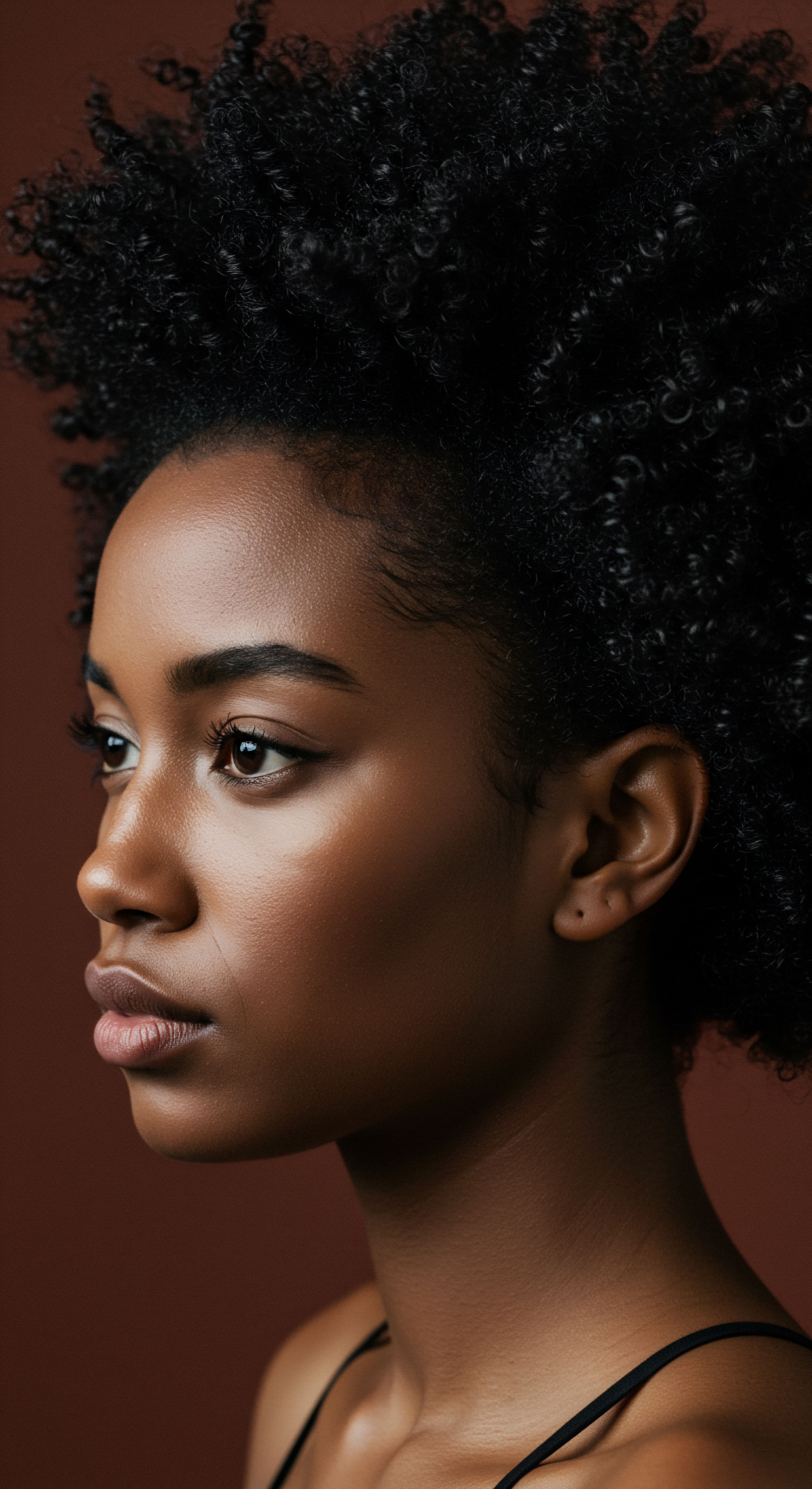
Holistic Influences on Hair Health
The practice of using traditional head coverings at night aligns with a broader holistic approach to hair health. It recognizes that hair is not isolated but influenced by overall well-being, including sleep quality and stress levels.
Adequate sleep is critical for the body’s repair and growth processes, including those related to hair follicles. During deep sleep, cell turnover increases, tissue repair takes place, and hormone levels, such as melatonin and growth hormone, rise. These factors directly support the anagen (active growth) phase of the hair cycle. Poor sleep can disrupt this cycle, potentially leading to slower growth or increased shedding.
Moreover, sleep deprivation can elevate cortisol, the body’s primary stress hormone. Elevated cortisol levels are associated with various types of hair loss, including telogen effluvium, a stress-induced shedding condition. By promoting better sleep through comfort and the reassurance of protected hair, traditional coverings indirectly contribute to a healthier internal environment for hair growth.
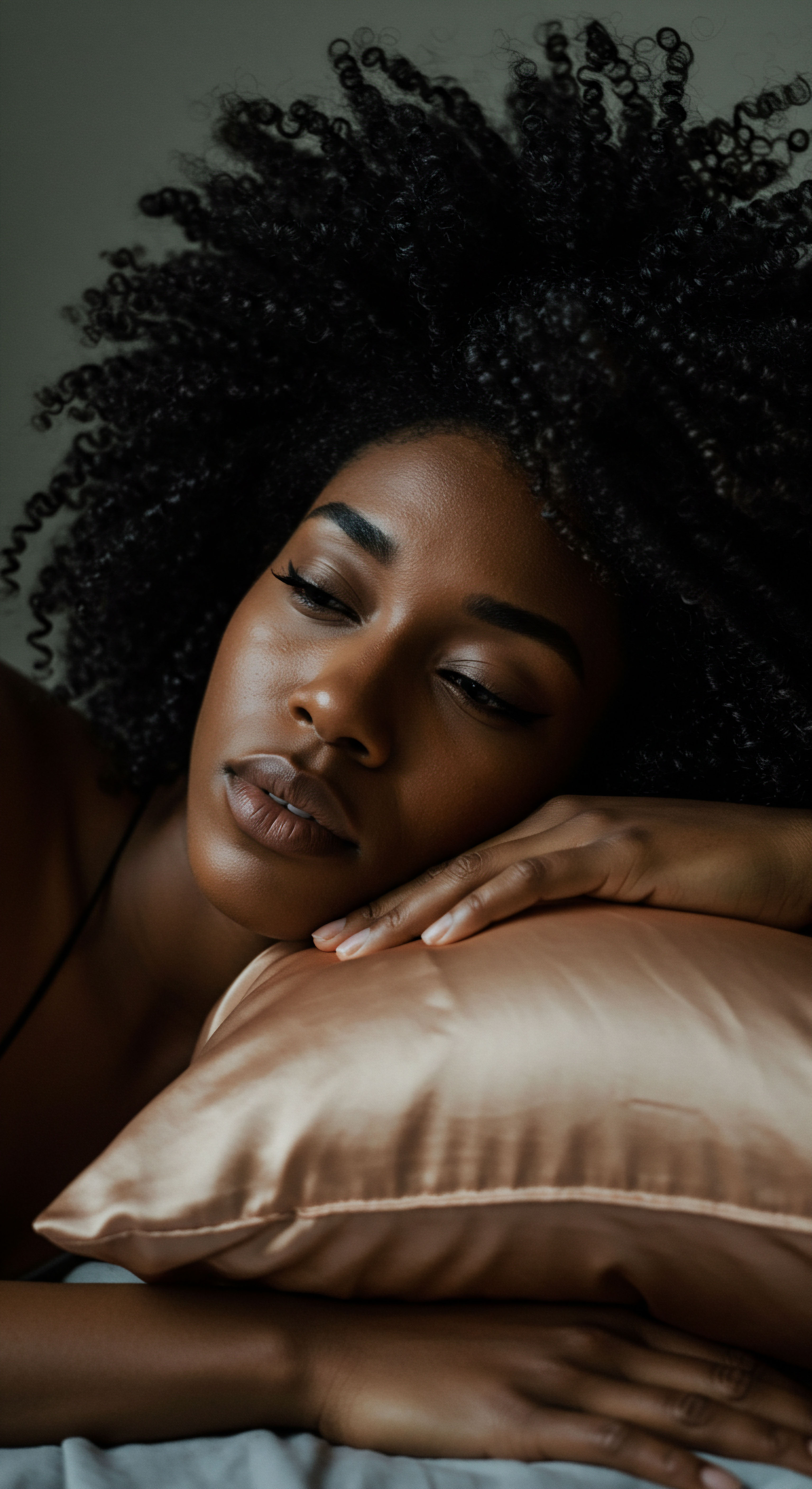
Can Modern Hair Science Affirm Ancient Wisdom?
Modern hair science consistently validates the principles behind traditional nighttime hair coverings. The understanding of the hair cuticle, the impact of friction, and the importance of moisture balance are all pillars of contemporary trichology. The smooth surface of silk and satin, allowing hair to glide rather than snag, directly addresses the mechanical stressors that can lead to cuticle damage and subsequent protein loss from the hair shaft.
Research on hair breakage, such as studies exploring the effects of different pH levels in shampoos or the impact of towel drying, consistently points to mechanical stress as a significant culprit. The protective barrier provided by a head covering directly mitigates a major source of this nightly mechanical stress. This convergence of ancient practices and modern scientific understanding underscores the profound, timeless efficacy of traditional head coverings for textured hair.
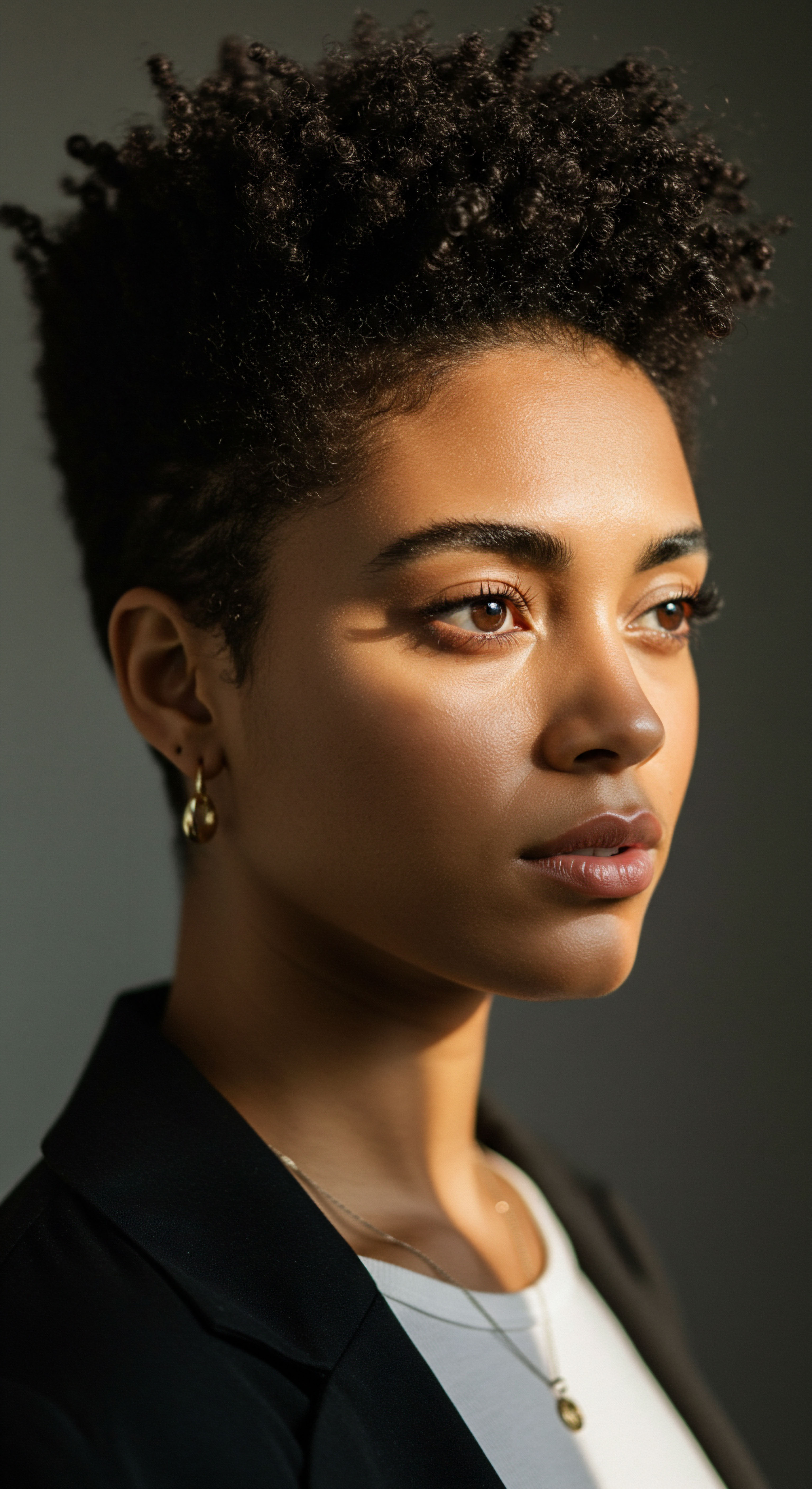
Reflection
The journey through traditional head coverings for textured hair at night reveals more than just practical solutions; it unveils a rich tapestry of cultural resilience, scientific validation, and personal connection. From the ancestral wisdom that recognized the vulnerability of coils and kinks to the modern scientific insights that quantify friction and moisture loss, a singular truth emerges ❉ the deliberate act of protecting hair during sleep is a powerful gesture of self-care. It is a quiet affirmation of heritage, a commitment to health, and a celebration of the hair’s enduring beauty. This nightly ritual, whether a simple bonnet or a meticulously tied scarf, extends beyond the tangible, becoming a quiet, continuous conversation between past and present, wisdom and well-being.
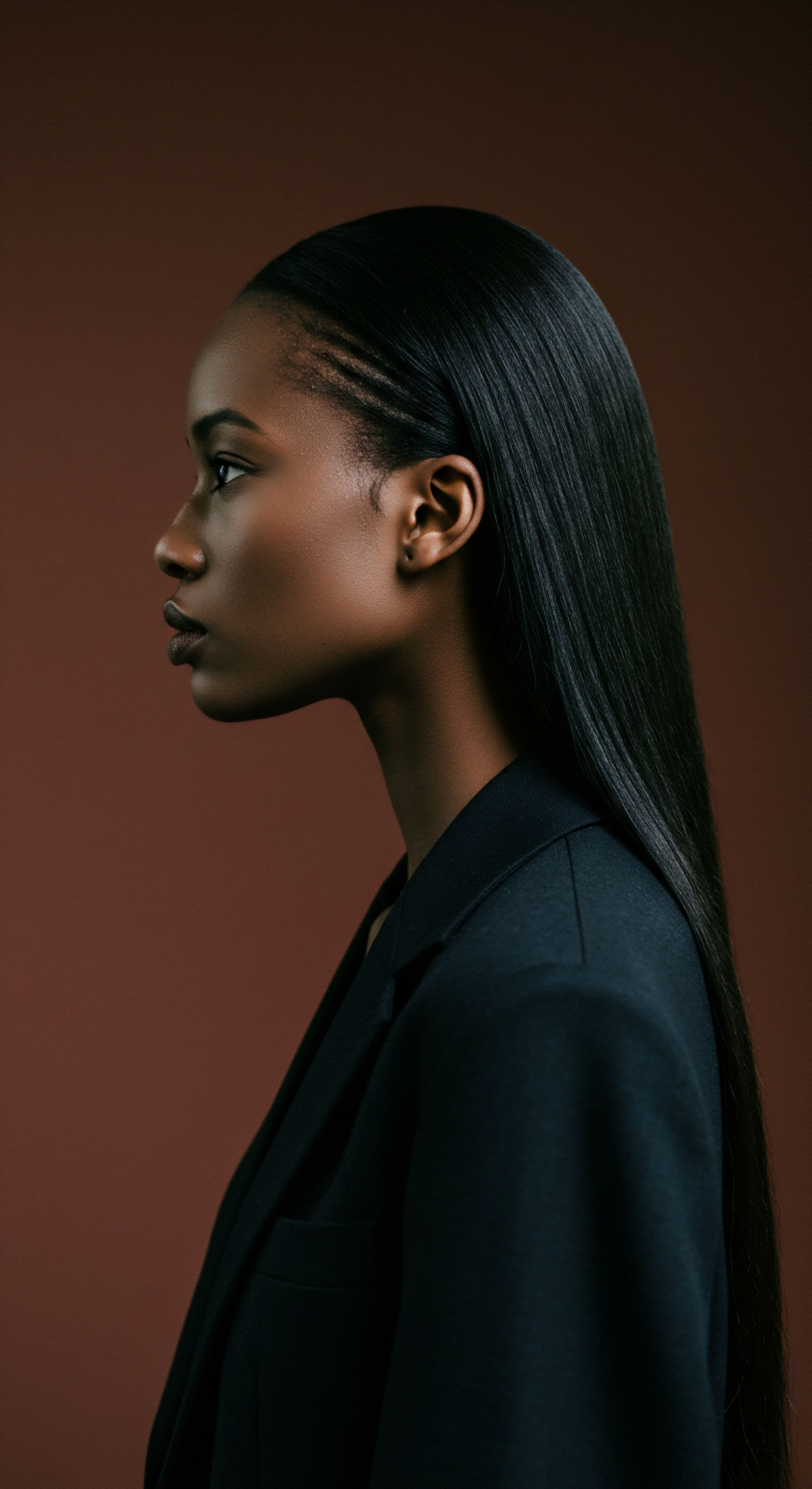
References
- Bhushan, B. et al. (2014). “Frictional Damage to Hair.” Journal of the American Academy of Dermatology .
- El-Messiry, M. et al. (2017). “Static Charge Accumulation on Hair and Its Relation to Hair Damage.” Journal of Cosmetic Science .
- Jakhar, D. & Kaur, I. (2018). “Friction Alopecia ❉ A Case Report.” Skin Appendage Disorders, 4(4), 220-222.
- Schwartz, R. A. & Knowles, R. W. (1963). “The Effects of Friction on Hair.” Journal of the Society of Cosmetic Chemists .
- Fletcher, J. (1995). Ancient Egyptian Hair ❉ A Study of Its History, Structure, and Cultural Significance. British Museum Press.
- Fletcher, J. (1998). “Hair and Wigs in Ancient Egypt.” British Museum Magazine .
- Wengrow, D. (2006). The Archaeology of Early Egypt ❉ Social Transformation in North-East Africa, 10,000-2650 BC. Cambridge University Press.
- Killen, G. (2019). Ancient Egyptian Hair and Makeup. The American University in Cairo Press.
- Diaz-Santin, O. (2024). Interview with Fashionista.
- Boozer, S. (2024). Interview with Fashionista.